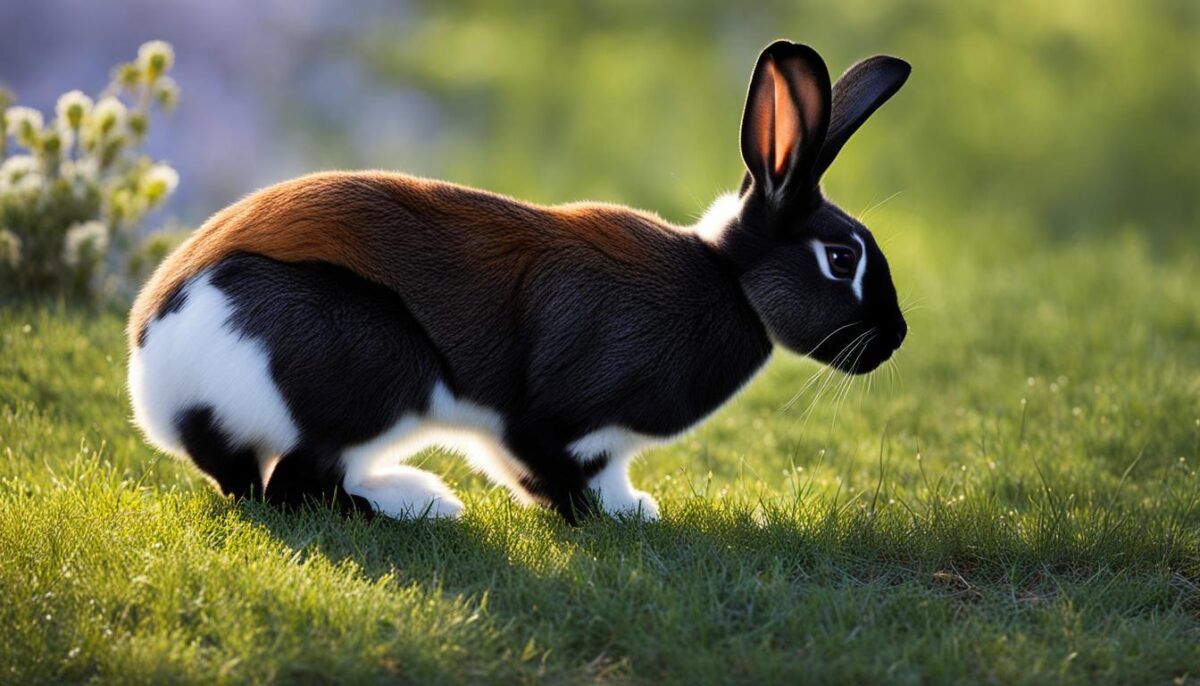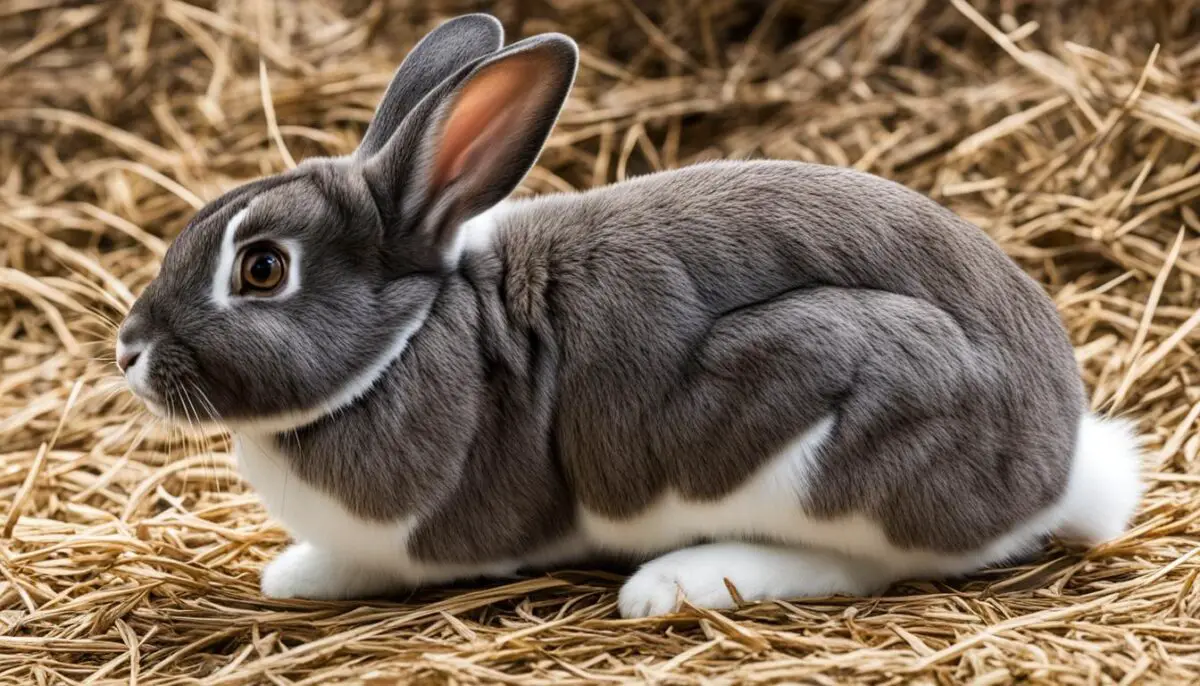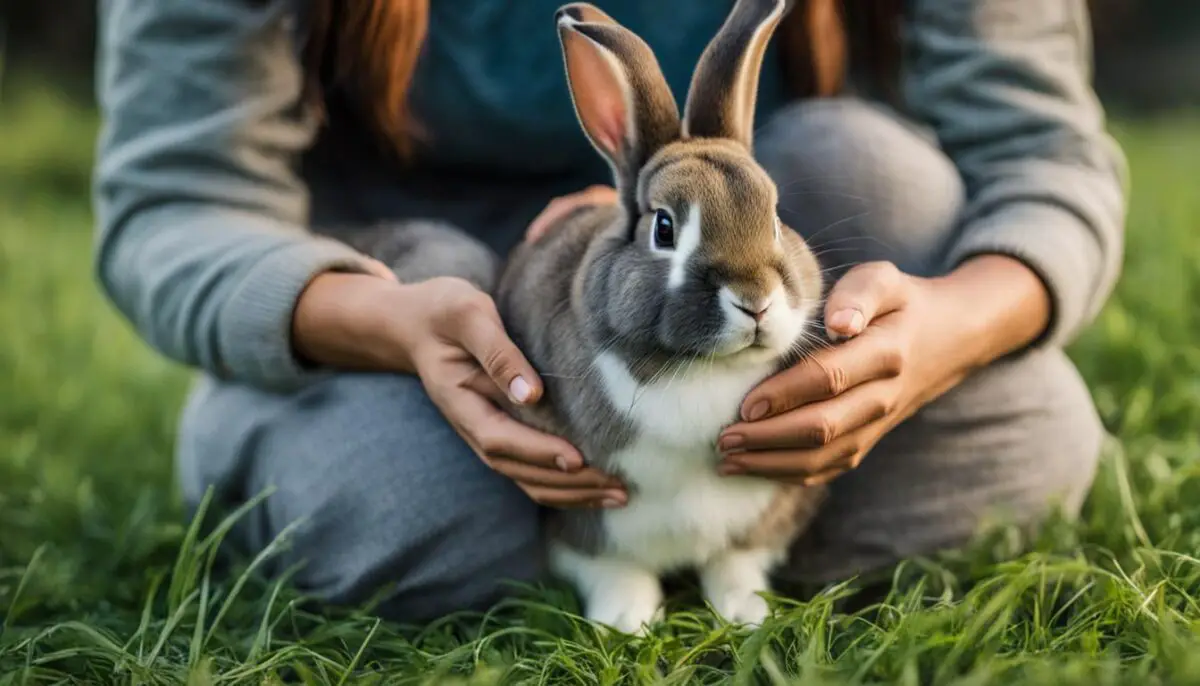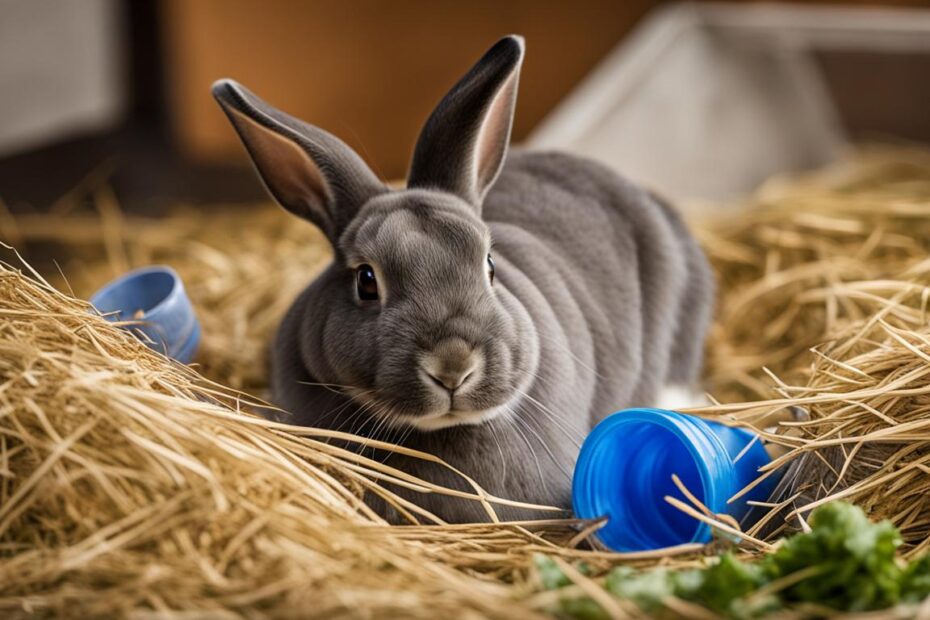Californian rabbits are a popular breed in the United States known for their distinct markings and docile nature. If you’re considering bringing a Californian rabbit into your home or farm, it’s essential to understand their lifespan and proper care requirements.
So, how long do Californian rabbits live? On average, Californian rabbits have a lifespan of 5-10 years. However, with the right care and attention, they can live even longer, reaching their optimal lifespan. Various factors, including genetics, environment, and overall health, influence their longevity.
To ensure that your Californian rabbit enjoys a happy and healthy life, it’s crucial to provide them with proper nutrition, a safe habitat, and regular veterinary check-ups. These care guidelines play a significant role in determining their duration of life.
Key Takeaways:
- The average lifespan of Californian rabbits is 5-10 years, but they can live longer with proper care.
- Factors like genetics, environment, and overall health can influence the rabbit’s lifespan.
- Provide a balanced diet, a safe habitat, and regular veterinary check-ups to ensure their well-being.
- Californian rabbits are known for their distinct markings and docile nature.
- They make excellent pets and livestock and enjoy social interaction with their owners.
Characteristics and Personality Traits of Californian Rabbits
Californian rabbits are beloved for their unique characteristics and docile nature. Whether you are considering them as livestock or family pets, their distinct markings and calm temperament make them an excellent choice.

One of the most notable features of Californian rabbits is their distinct markings on their ears, nose, feet, and tail. These dark markings against their white fur make them easily recognizable and add to their charm.
Aside from their markings, Californian rabbits have a calm temperament that sets them apart. They are known for being gentle and easy to handle, making them ideal for novice rabbit owners or families with young children. Their docile nature allows for easy social interaction and bonding with their owners.
With their large size and soft fur, Californian rabbits are not only charming but also pleasing to the touch. Their fur is thick and plush, providing a delightful sensory experience when petting them.
Easy handling is another defining characteristic of Californian rabbits. They are generally cooperative and enjoy human interaction. Proper handling techniques involve supporting their entire body and holding them close to your body for security.
“Californian rabbits are a joy to handle. Their calm and friendly nature make them perfect companions for individuals or families looking for a gentle and loveable pet.”
Californian Rabbit Size, Fur, and Eyes
When it comes to size, Californian rabbits are known for being relatively large. Adult Californian rabbits typically weigh between 8-10 pounds, making them a robust breed. Their size and weight contribute to their sturdy and substantial presence.
One of the distinguishing features of Californian rabbits is their fur. They have short, soft, and thick flyback fur. This means that when you pet them, their fur quickly returns to its original position, giving them a neat and tidy appearance. The flyback fur of Californian rabbits enhances their overall aesthetic appeal and contributes to their charming allure.
Californian rabbits are recognized for their striking coloring. Most Californians have white fur with dark brown or black points on their ears, nose, feet, and tail. These dark points provide a beautiful contrast against their predominantly white fur, creating an eye-catching color pattern that sets them apart from other rabbit breeds.
Another distinctive characteristic of Californian rabbits is their eye color. Due to an albino gene, their eyes are vibrant pink or red. This unique eye color adds to their visual appeal and gives them a captivating and endearing look.
To provide you with a visual representation of Californian rabbit characteristics, here is a table summarizing their size, fur, and eye color:
| Characteristic | Description |
|---|---|
| Size | Adult Californian rabbits typically weigh between 8-10 pounds. |
| Fur | Californian rabbits have short, soft, and thick flyback fur. |
| Coloring | Most Californians have white fur with dark brown or black points on their ears, nose, feet, and tail. |
| Eye Color | Due to an albino gene, their eyes are vibrant pink or red. |
With their size, unique fur, and captivating eye color, Californian rabbits are truly remarkable and charming companions.

Lifespan of Californian Rabbits
Californian rabbits have an average lifespan of 5-10 years. Pet rabbits tend to live longer than those raised for meat. A combination of proper care, nutrition, and regular veterinary check-ups contributes to their longevity. Factors such as genetics, environment, and overall health can influence the lifespan of Californian rabbits.
“Proper care, nutrition, and regular veterinary check-ups contribute to the longevity of Californian rabbits.”
The Factors Influencing Californian Rabbit Lifespan
Several factors can affect the lifespan of Californian rabbits, including:
- Genetics: The genetic makeup of a rabbit plays a significant role in determining its lifespan. Some rabbits may have a predisposition to certain health conditions, while others may inherit longevity traits.
- Environment: Providing a safe and suitable living environment is crucial for the well-being and longevity of Californian rabbits. A stress-free and comfortable habitat promotes a healthier life.
- Healthcare: Regular veterinary check-ups, vaccinations, and preventive measures are vital for maintaining the overall health of Californian rabbits. Prompt medical attention can help detect and address any health issues before they escalate.
By prioritizing these factors, rabbit owners can maximize the lifespan and well-being of their Californian rabbits.

Habitat and Care for Californian Rabbits
Californian rabbits can thrive in both indoor and outdoor environments, but their habitat should be safe and spacious to ensure their well-being.
When housing Californian rabbits, it is crucial to provide them with a sturdy enclosure that has a solid bottom. This will help prevent foot injuries and keep them secure. A recommended cage size for Californian rabbits is at least 30 inches wide and 36 inches long, allowing ample space for movement.
In addition to a suitable cage, it is important to create an enriching environment for your Californian rabbit. Consider providing a litter box to promote cleanliness and hygiene. Including toys and chewable objects in their habitat will keep them engaged and mentally stimulated.
A well-balanced diet is vital for the health of Californian rabbits. Their diet should consist of high-quality hay, rabbit pellets, and fresh vegetables. Hay provides essential fiber while pellets offer the necessary nutrients. Fresh vegetables should be introduced gradually and include options such as leafy greens and root vegetables. It is essential to avoid feeding them toxic foods like chocolate, caffeine, or certain plants.
Regular veterinary care is essential for the overall well-being of Californian rabbits. They should receive routine check-ups, vaccinations, and preventive treatments for parasites. Grooming your rabbit regularly, such as brushing their fur and trimming their nails, will help maintain their hygiene and prevent any potential health issues.
Remember, each Californian rabbit has unique care requirements, so it is essential to monitor their behavior, eating habits, and overall health. By providing a suitable habitat, a balanced diet, and regular veterinary care, you can ensure a happy and healthy life for your beloved Californian rabbit.
Tips for Housing and Caring for Californian Rabbits
- Ensure a safe and spacious enclosure with a solid bottom to prevent foot injuries.
- Provide a cage that is at least 30 inches wide and 36 inches long.
- Include a litter box in their habitat for cleanliness.
- Enrich their environment with toys and chewable objects to keep them mentally stimulated.
- Feed a well-balanced diet of hay, rabbit pellets, and fresh vegetables.
- Regularly visit a veterinarian for check-ups, vaccinations, and preventive treatments.
- Groom your rabbit regularly to maintain their hygiene and prevent health issues.
| Californian Rabbit Habitat and Care | |
|---|---|
| Housing | Safe and spacious enclosure with a solid bottom |
| Cage Size | At least 30 inches wide and 36 inches long |
| Enrichment | Litter box, toys, and chewable objects |
| Diet | High-quality hay, rabbit pellets, and fresh vegetables |
| Veterinary Care | Routine check-ups, vaccinations, and preventive treatments |
| Grooming | Regular brushing and nail trimming |

Handling and Socialization of Californian Rabbits
Californian rabbits are known for their docile nature and are generally easy to handle. They enjoy social interaction with their owners and can be trained to be friendly and affectionate. Building a strong bond with your Californian rabbit is important for their well-being and overall happiness.
When handling Californian rabbits, it is crucial to support their entire body and hold them close to you for security. This helps them feel safe and protected, especially during unfamiliar situations or in new environments.
Spending quality time with your Californian rabbit outside of their enclosure is essential for their socialization. This can include gentle play sessions, allowing them to explore new surroundings, and letting them interact with other friendly animals under supervision.
Mental Stimulation for Socialization
Mental stimulation is vital for the socialization of Californian rabbits. Providing them with interactive toys, such as puzzle feeders, chew toys, and tunnels, helps keep them mentally engaged and prevents boredom. These activities also encourage natural behavior and promote a healthy bond between you and your rabbit.
Allowing your Californian rabbit to roam in a safe and secure space, such as a rabbit-proofed room or a designated play area, can also contribute to their socialization. Providing various hiding spots, tunnels, and platforms within their play area stimulates their curiosity and encourages exploration.
“Spending quality time and providing mental stimulation are key to socializing Californian rabbits and strengthening the bond between owners and their furry friends.”
Remember, each rabbit has a unique personality and may require different approaches to socialization. Observe their body language and preferences to tailor your interactions accordingly. It is crucial to be patient, gentle, and consistent in your efforts to establish a strong bond with your Californian rabbit.
To summarize, handling and socializing Californian rabbits involves:
- Properly supporting their body when handling
- Spending quality time outside of their enclosure
- Providing mental stimulation through play and toys
- Creating a safe and stimulating environment for exploration
By following these guidelines, you can foster a positive and trusting relationship with your Californian rabbit.

Health Considerations for Californian Rabbits
Just like any other rabbits, Californians can experience various health issues throughout their lives. It’s important for rabbit owners to be aware of these common health concerns and take proactive measures to ensure their rabbits’ well-being. Here are some of the key health considerations for Californian rabbits:
1. Malocclusion
Malocclusion, or misalignment of the teeth, is a common dental problem in rabbits, including Californians. Their continuously growing teeth can become overgrown or develop sharp points, which can cause pain, difficulty eating, and even abscesses. Regular dental check-ups with a veterinarian who is knowledgeable about rabbit dental health are essential to prevent and treat malocclusion.
2. GI Stasis
GI stasis, also known as gastrointestinal stasis, is a serious and potentially life-threatening condition that affects the digestive system of rabbits. It occurs when the normal motility of the digestive tract slows down or stops, leading to a buildup of food and gas. Californian rabbits are susceptible to GI stasis, which can be caused by factors such as stress, dehydration, lack of exercise, or an inappropriate diet. Providing a balanced diet, plenty of fresh water, regular exercise, and a stress-free environment are crucial in preventing GI stasis.
3. Ear Mites
Ear mites are a common external parasite that can affect Californian rabbits. These tiny parasites live in the ear canals, causing irritation, itching, and discomfort. If left untreated, ear mites can lead to secondary bacterial infections and permanent damage to the ears. Regular ear examinations and cleaning, along with prompt treatment with appropriate medications, are necessary to prevent and control ear mite infestations.
4. Flystrike
Flystrike is a serious condition that occurs when flies lay their eggs on a rabbit’s fur, which then hatch into maggots and feed on the rabbit’s flesh. This can happen if a rabbit’s fur is soiled or if it has an open wound or skin irritation. Californian rabbits with their dense fur are particularly prone to flystrike. Maintaining a clean and hygienic living environment, regularly checking your rabbit’s fur for signs of soiling or wounds, and using appropriate flystrike prevention methods can help safeguard your Californian rabbit against this potentially life-threatening condition.
To ensure the overall health and well-being of your Californian rabbit, it is crucial to provide a clean and safe living habitat, a balanced diet, and regular veterinary care. Timely intervention and proactive preventive measures can go a long way in keeping your Californian rabbit healthy and happy.
| Health Concern | Description | Prevention |
|---|---|---|
| Malocclusion | Misalignment of teeth that can cause pain and difficulty eating. | Regular dental check-ups and appropriate dental care. |
| GI Stasis | Slowing or stopping of the digestive tract, leading to food and gas buildup. | Provide a balanced diet, fresh water, exercise, and a stress-free environment. |
| Ear Mites | External parasites that cause ear irritation and discomfort. | Regular ear examinations, cleaning, and prompt treatment with appropriate medications. |
| Flystrike | Eggs laid by flies on a rabbit’s fur develop into maggots that feed on the flesh. | Maintain a clean living environment, regularly check for soiled fur or wounds, and use flystrike prevention methods. |
Note: Regular veterinary check-ups are crucial for the early detection and treatment of any health issues in Californian rabbits. Always consult with a qualified rabbit veterinarian for personalized advice and care.
Conclusion
Californian rabbits make excellent pets and livestock, with an average lifespan of 5-10 years. These docile creatures are easy to handle and enjoy social interaction with their owners. To ensure their well-being, it is essential to provide proper care, nutrition, and regular veterinary check-ups.
Creating a safe habitat is crucial for the healthy development of your Californian rabbit. A spacious enclosure with a solid bottom and enriching their environment with toys and chewable objects will keep them mentally stimulated. Additionally, a balanced diet consisting of hay, rabbit pellets, and fresh vegetables is essential for their nutrition.
By dedicating time to handle and socialize your Californian rabbit, you can strengthen your bond and help them grow into friendly and affectionate companions. Furthermore, engaging them in mental and physical activities outside of their enclosure will contribute to their happiness and well-being.
By following these guidelines and providing a safe habitat, a balanced diet, and opportunities for mental stimulation and exercise, you can ensure a happy and healthy life for your Californian rabbit. Remember, their well-being is dependent on your commitment to their care and nurturing.
FAQ
How long do Californian rabbits live?
Californian rabbits have an average lifespan of 5-10 years.
What are the characteristics and personality traits of Californian rabbits?
Californian rabbits are large and docile, with distinct markings on their ears, nose, feet, and tail. They have a calm temperament and are easy to handle.
How big are Californian rabbits and what does their fur look like?
Adult Californian rabbits typically weigh between 8-10 pounds and have short, soft, thick flyback fur. Most Californians have white fur with dark brown or black points on their ears, nose, feet, and tail.
What is the lifespan of Californian rabbits?
Californian rabbits have an average lifespan of 5-10 years.
How should I house and care for Californian rabbits?
Californian rabbits can live both indoors and outdoors. They require a safe and spacious enclosure, preferably with a solid bottom. A balanced diet, regular veterinary check-ups, and a clean habitat are essential for their well-being.
How do I handle and socialize Californian rabbits?
Californian rabbits are generally docile and easy to handle. They enjoy social interaction with their owners and can be trained to be friendly and affectionate. Spending time with them outside of their enclosure and providing mental stimulation through play and toys is beneficial for their socialization.
What are some common health issues in Californian rabbits?
Common health issues in Californian rabbits include malocclusion, GI stasis, ear mites, and flystrike. Proper nutrition, a clean habitat, and regular veterinary care are important to ensure their overall health and well-being.
Are Californian rabbits good pets?
Californian rabbits make excellent pets and livestock. With proper care, nutrition, and regular veterinary check-ups, they can live a happy and healthy life. They are docile, easy to handle, and enjoy social interaction with their owners.


